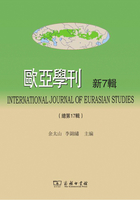
A Review of Historical Caḍota and Shanshan
This paper is intended to update rather sporadic knowledge about the oasis kingdoms which were located at the Niya site. In line with the time sequence, the first recorded kingdom was Caḍota. At Niya site no.14, wooden tablets with Chinese characters typical of the Western Han Dynasty were found which indicated that Chinese had been the official language of the royal family of the kingdom of Caḍota. However, Caḍota did not remain an independent political entity after it was absorbed into the Shanshan kingdom prior to the collapse of the Western Han Dynasty. Shanshan itself seems to have been the name of the kingdom, not a toponym, which is preserved only in Chinese historical accounts. Judging from its pronunciation, the name Shanshan was very possibly derived from the Middle Iranian expression Šāhān-šāh, “the king of kings”. No single Kharoṣṭhī document has mentioned the name Shanshan.
This paper supports the view that Kharoṣṭhī/Gandhārī was not adopted by the oasis kingdoms along the Southern Silk Route as their official script and language until after 175 CE which is the date of the last event in the chapter treating the Western Regions in Hou Hanshu. It is further thought that a group of Kushan elites came and replaced the indigenous reigning royal family. Their new kingdom bore the name Nu-ava as confirmed in many Kharoṣṭhī documents from Niya, while Shanshan only appears in Chinese records. The government offices in Nu-ava were called the draṃga, and the officials called draṃgadhara. In ancient Indian traditions, according to the ideological theory sustaining the idea of a Cakravartin empire, a seigneur was designated as koṭṭa-rāja. While koṭṭa, meaning “fort, stronghold”, signified a kingdom with limited territorial boundaries, the term draṃga (which can also mean “fort”) may have designated an even smaller kingdom, whose royal family might have been subordinate to the Kushan empire.
Chinese cultural heritage is also evident in Nu-ava/Shanshan, e.g., the wooden tablet called “hastalekha” in Kharoṣṭhī was introduced for keeping contracts, letters, and official documents. The word “hastalekha” is a loan translation of the Chinese term chidu尺牘, literally “foot-rule letter”. The cozbo was an official title which in Chinese was zhubu 主簿. The introduction of a class of official from the Chinese official administrative system ushered in a reform during the reign of King Mahiri of Nu-ava at the end of the 3rd century.